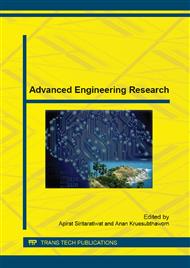p.479
p.483
p.487
p.491
p.495
p.500
p.507
p.511
p.515
Orbit Control Manoeuvre Strategy for Post-Mission De-Orbiting of a Low-Earth-Orbit Satellite
Abstract:
In this paper, we investigate a practical strategy for de-orbiting the retired satellite in low-Earth orbit for the space debris mitigation. The only means available onboard the spacecraft for performing the task is the chemical propulsion system with limited propellant provided. It is proposed to reduce the orbital perigee to reach a certain level where the atmospheric drag can play its role in lowering the satellite altitude, and eventually bringing it to re-entry within a defined period of time. The required delta-V is divided into a series under the constraints on the propulsion system and orbit control manoeuvre implementation. The results from the flight dynamics simulator suggest that a fraction of the remaining propellant available on the demonstrating mission, the Thaichote satellite, would be sufficient to accomplish the task. The strategy implementation will be another vital step in transferring the spacecraft to a safe passive state, where the fuel tank is empty, all batteries are discharged and all electronic devices are deactivated.
Info:
Periodical:
Pages:
495-499
Citation:
Online since:
August 2015
Authors:
Price:
Сopyright:
© 2015 Trans Tech Publications Ltd. All Rights Reserved
Share:
Citation:


